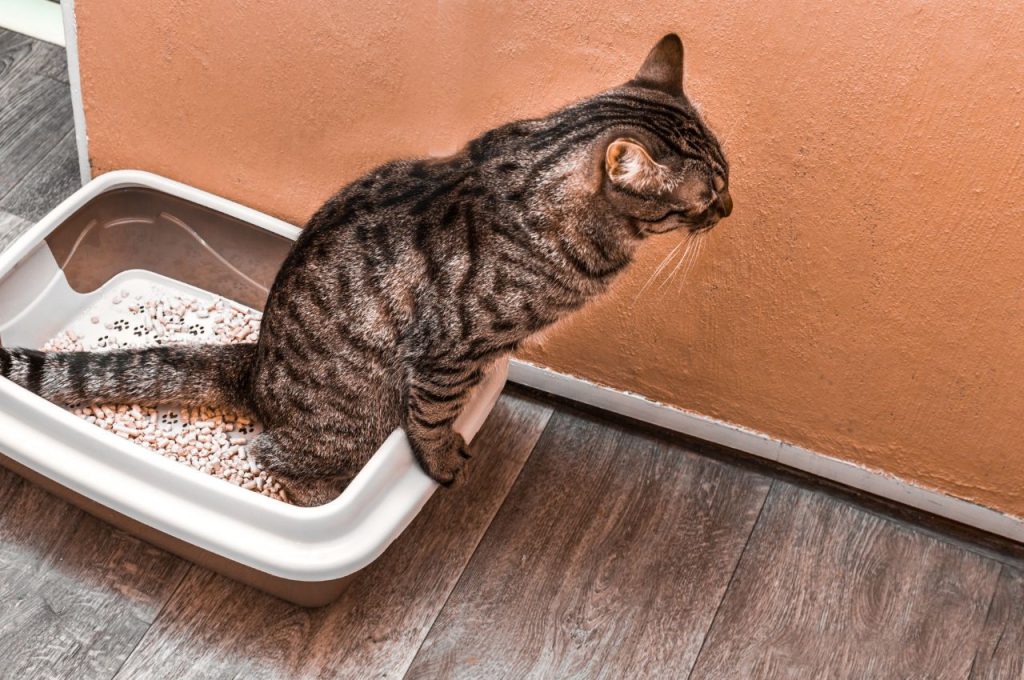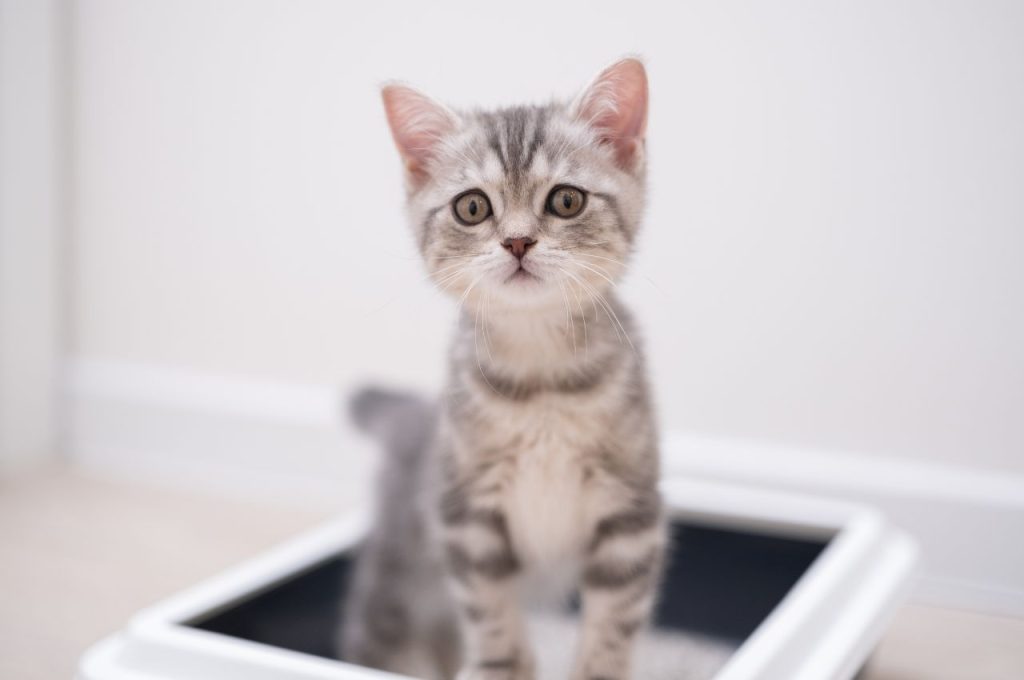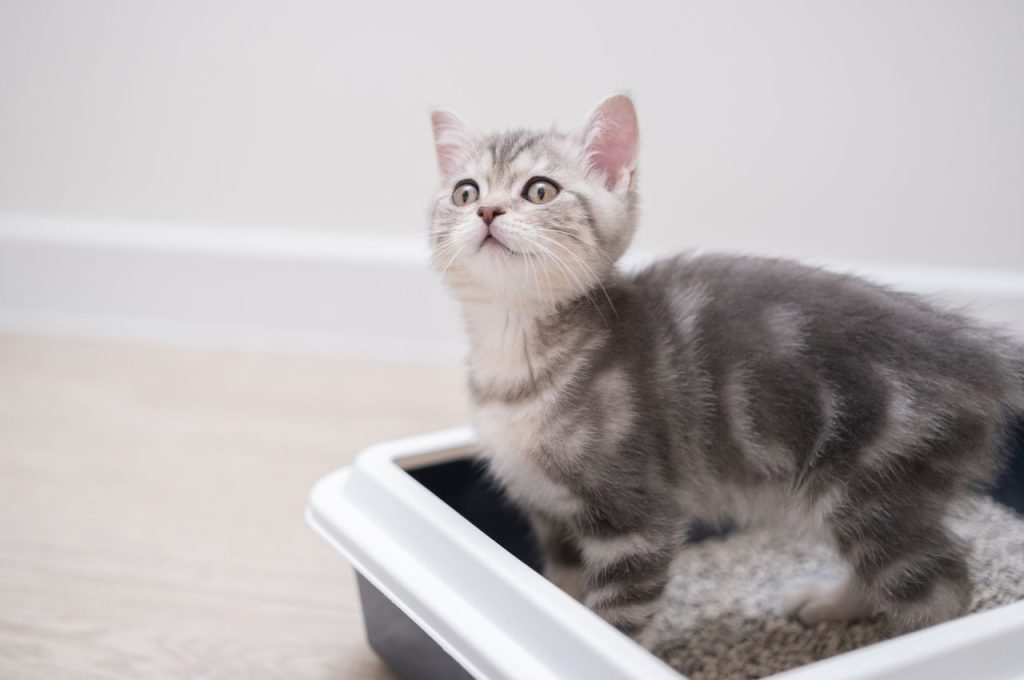To stop cats from peeing on clothes, keep them away from the clothes by closing the doors to the rooms where the clothes are kept and using deterrent sprays, such as citrus or vinegar. Cats are adorable and lovable pets, but sometimes they can develop unpleasant habits like peeing on clothes.
Dealing with this behavior can be frustrating and messy. Whether it’s a new behavior or a recurring problem, finding a solution is essential to maintain a clean and odor-free home. This article provides practical tips to help cat owners prevent their furry friends from using their clothes as a toilet.
By implementing these strategies, you can tackle the issue effectively and restore peace to your home. So, let’s explore how to get cats to stop peeing on clothes and make your living space a cat-friendly and fresh-smelling environment once again.
Understanding The Reasons Behind the Behavior
Understanding the reasons behind your cat’s behavior can help you stop them from peeing on clothes. Discovering the root cause and addressing it appropriately can bring a resolution to this frustrating problem.

Understanding the Reasons Behind the Behavior When it comes to dealing with a cat peeing on your clothes, it’s essential to understand the reasons behind this behavior. Cats are generally clean animals, and if this behavior suddenly starts happening, there might be an underlying cause that needs to be addressed. By understanding the reasons behind your cat’s behavior, you can take the appropriate steps to stop them from peeing on your clothes.
Identifying Medical Issues
One of the first things to consider is whether your cat is experiencing any medical issues that might be causing them to pee on your clothes. Urinary tract infections, bladder stones, or inflammation can cause discomfort and lead to inappropriate elimination. If you notice other signs like frequent urination, blood in their urine, or they seem to be straining while peeing, it’s crucial to consult with a veterinarian. They will be able to diagnose any medical issues and provide the necessary treatment.
Recognizing Territorial Marking
Cats are territorial animals, and urine marking is one way they communicate and establish their territory. If your cat is peeing on your clothes, it could be their way of marking their scent and claiming ownership. This behavior is more common in unneutered or unspayed cats, as hormones play a significant role. However, even neutered cats can urine mark if they feel threatened or stressed.
Addressing Stress Or Anxiety
Stress and anxiety can also lead to a cat peeing on clothes. Changes in the environment, such as moving to a new home or the introduction of a new pet, can cause stress for your feline friend. Cats are creatures of habit, and disruptions to their routine can trigger anxiety. It’s important to create a calm and stable environment for your cat, providing them with hiding spots, vertical spaces, and playtime to help reduce their stress levels. Moreover, if you’re dealing with multiple cats in your household, inter-cat aggression or competition for resources can lead to stress-induced urine marking. Ensuring each cat has their litter box, food, and water bowls in separate locations can help reduce these issues. In addition to these common factors, there might be other specific triggers causing your cat to urinate on your clothes. Some cats can be sensitive to certain cleaning products, litter types, or even specific fabrics. Taking note of any patterns or triggers can help you identify and address these additional causes. Remember, getting to the root cause of your cat’s behavior is essential in resolving the issue of them peeing on your clothes. By addressing medical issues, recognizing territorial marking, and reducing stress or anxiety, you can create a healthier and more harmonious environment for both you and your feline companion.
Implementing Prevention Strategies
Pet owners who have experienced the frustration of finding their beloved feline’s urine-soaked clothes can attest to the need for effective prevention strategies. By implementing a few simple techniques, you can discourage your cat from using your wardrobe as their bathroom. In this section, we will explore methods to create a comfortable litter box area, provide adequate resources, and utilize deterrents to help eliminate this unwanted behavior.
Creating A Comfortable Litter Box Area
The first step in preventing your cat from peeing on clothes is to ensure they have a comfortable and inviting litter box area. This area should be easily accessible and consistently maintained to encourage regular use. Consider the following factors:

- Location: Choose a quiet and secluded area for the litter box, away from high-traffic zones and loud noises. Cats prefer privacy when using the litter box.
- Litter Type: Experiment with different litter textures, such as clumping, non-clumping, or even natural alternatives like pine or corn-based litter. Cats have preferences, so find a litter that your cat finds comfortable and appealing.
- Number of Boxes: Providing multiple litter boxes is essential, especially in households with more than one cat. The rule of thumb is one litter box per cat, plus an extra box as a backup. This ensures that each cat has a dedicated space to eliminate.
- Cleanliness: Regularly scoop the litter box to remove waste and keep the area clean. Cats are hygienic animals and may avoid a dirty litter box. Aim to scoop at least once a day and completely change the litter every week.
Providing Adequate Resources
Cats may resort to peeing on clothes if they feel their needs are not being met. To prevent this behavior, it’s important to ensure your cat has all the necessary resources. Consider the following:
- Food and Water: Provide fresh food and water in appropriate dishes or bowls. Some cats prefer separate food and water stations, while others are content with a combination dish.
- Scratching Posts: Cats use scratching posts to mark their territory and maintain healthy claws. Ensure you have sturdy scratching posts or boards available in various locations around your home.
- Hiding Places: Cats need hiding places where they can retreat and feel secure. Provide cozy hideaways, such as cardboard boxes or cat condos, for your feline friend to relax and unwind.
- Play and Attention: Dedicate time for interactive play sessions and provide toys to keep your cat mentally stimulated. Engaging with your cat regularly strengthens the bond between you and provides a healthy outlet for their energy.
Using Deterrents
If your cat continues to exhibit unwanted behavior despite creating an ideal litter box area and providing adequate resources, it may be necessary to employ deterrents. These deterrents discourage your cat from peeing on clothing by making the items unappealing or inaccessible. Consider the following options:
- Odor Neutralizers: Use enzymatic cleaners or specially formulated sprays to eliminate lingering urine odors from clothes. Cats are less likely to urinate on items that don’t have the scent of their urine.
- Covering Clothes: When not in use, keep your clothes in closed closets or drawers to prevent access. If your cat cannot reach the clothing, they are less likely to urinate on it.
- Double-Sided Tape: Apply double-sided tape to areas where your cat tends to urinate. The sticky texture is unpleasant for cats and acts as a deterrent.
- Aluminum Foil: Place aluminum foil on the floor or furniture where your cat urinates. Cats dislike the texture and sound, discouraging them from using those areas as a bathroom.
By implementing prevention strategies such as creating a comfortable litter box area, providing adequate resources, and using deterrents, you can effectively train your cat to stop peeing on clothes. Consistency and patience are key in reinforcing these strategies and promoting desired behavior.
Rehabilitating The Behavior
Dealing with a cat that pees on clothes can be frustrating and unpleasant. However, with patience and the right approach, it is possible to rehabilitate this behavior and create a more harmonious environment for both you and your feline friend. In this section, we will explore three effective strategies to help cats stop peeing on clothes: cleaning and removing odors, positive reinforcement, and seeking professional help.
Cleaning and Removing Odors
Cleaning and removing odors is an essential step in rehabilitating a cat’s behavior. Cats have a highly developed sense of smell, and if they detect the scent of urine on clothes, they may continue to associate it with an appropriate place for elimination. To clean soiled clothes, follow these steps:
- Immediately remove the soiled clothes and place them in a secure location away from the cat’s reach.
- Gently blot any excess urine using paper towels or a clean cloth. Avoid rubbing, as it can worsen the odor and stain.
- Rinse the clothes with cold water to dilute the urine and remove as much of it as possible.
- Use a pet-friendly enzyme cleaner designed specifically to eliminate urine odors. Follow the instructions on the product label to effectively treat the affected area.
- After cleaning, it is crucial to thoroughly dry the clothes. Sunlight can help remove residual odors, so if possible, hang them outside to dry.
Remember, even if clothes appear clean to the human eye, cats can still detect lingering odors. Repeat the cleaning process if necessary, ensuring all traces of urine are completely removed.
Positive Reinforcement
Positive reinforcement is a powerful tool to encourage desired behaviors in cats. By rewarding positive actions, such as using the litter box, you can redirect your cat’s attention away from peeing on clothes. Here’s how to effectively use positive reinforcement:
- Identify a suitable litter box location that is easily accessible for your cat.
- Every time your cat successfully uses the litter box, offer verbal praise and gentle petting to express your approval.
- Consider using treats or a favorite toy as additional rewards to further reinforce the desired behavior.
- Keep the litter box clean and make it a comfortable and inviting space for your cat. Avoid placing it near noisy or high-traffic areas.
- Consistency is key. Stick to a regular schedule for feeding, playtime, and litter box cleaning to establish a routine that your cat can rely on.
With patience and consistent positive reinforcement, your cat will associate the litter box as the preferred place for elimination, decreasing the likelihood of peeing on clothes.
Seeking Professional Help
If all your efforts to rehabilitate your cat’s behavior prove unsuccessful, it may be time to seek professional help. Consulting with a veterinarian or a certified animal behaviorist can provide valuable insights and guidance tailored to your specific situation. They can help identify any underlying medical conditions or behavioral issues that might be contributing to inappropriate urination. Additionally, they can offer specialized behavior modification techniques to address the problem effectively.

Remember, patience and understanding are essential during the rehabilitation process. Avoid punishment, as it can cause stress and further complicate the issue. By employing these strategies, you can work towards resolving the behavior of your cat peeing on clothes and creating a more harmonious living environment for everyone.
Frequently Asked Questions
Here are some commonly asked questions about Eliminate Cat Urine Odor and Prevent Clothes Soiling.
Why does my cat pee on anything fabric?
Cats may pee on fabric due to various reasons like medical issues, stress, territorial marking, or litter box aversion. Ensure a clean litter box, reduce stress factors, and consult a veterinarian to rule out any underlying health problems.
Why is my cat urinating outside the litter box?
Inappropriate urination can be caused by various factors, including medical issues, stress, territorial marking, or dissatisfaction with the litter box. It’s essential to consult with your veterinarian to rule out any underlying health concerns and address behavioral issues.
How can I discourage my cat from scratching clothes?
Provide your cat with plenty of appropriate scratching outlets, such as scratching posts or pads. Use deterrents on clothes and other items, such as double-sided tape or aluminum foil, to discourage scratching behavior.
Conclusion
Dealing with cat urine odors and preventing clothes from getting dirty requires patience, diligence, and a proactive approach. By identifying the root cause, implementing litter box strategies, providing appropriate scratching posts, and maintaining cleanliness, you can create a cat-friendly environment that discourages such behavior.
Don’t hesitate to seek guidance from your veterinarian or a qualified animal behaviorist if needed. With these tips, you can restore harmony to your home and keep your clothes smelling fresh.
